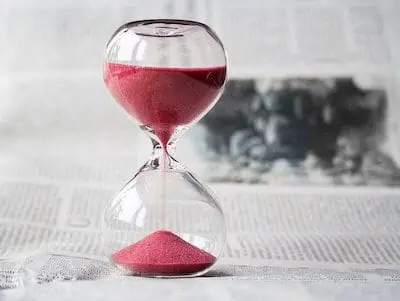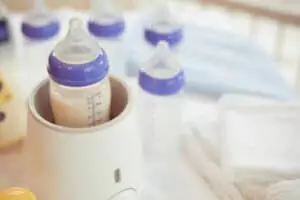When your baby is finished nursing, you might wonder how much time breasts need to refill after breastfeeding. Is there a set time that your breasts need, or is something else happening to create breastmilk?
Many people think of breasts like bottles, imagining that they become entirely emptied and need time to refill. After a specific time, the timer goes off, and your breasts are magically full again and ready to feed your baby.
While that used to be the outdated thought on refill time for breastfeeding, we know now that things have changed, and that’s not how breastfeeding really works.
Do Breasts Really Refill?
At any given time after breastfeeding or pumping, your baby removes around 75-80% of the breastmilk available at the time, but your breasts are never entirely empty. Your body continually produces breast milk, and we know through extensive research that babies rarely take all of the milk available from the breast.
The easiest way to think about it is trying to imagine emptying a creek or a stream; it’s not possible. The water keeps flowing, and while you might take some of it, more is still coming down.
How Long Does It Take for Breasts to Refill?
Evidence shows us that the emptier the breast, the faster your body makes more milk. So, if your baby is starving, then your body will speed up milk production in response to your baby’s needs.

What you want to know is how much time it takes for the flow to build back up. After nursing or pumping for so long, no significant amount of milk can be expressed. From that time, it takes between 20-30 minutes for your breasts to “fill back up” again. By filling back up, I mean the milk flow would be quicker. If you want a swift flow, you might need to wait an hour.
The amount of time that it takes for your flow to quicken again isn’t determined by whether you’re nursing or pumping. Your body doesn’t know the difference; it’s paying attention to how much milk is removed and how frequently.
In the early weeks after childbirth, your body is more responsive to milk removal because your body is learning how to make breast milk and how much to make. You have high prolactin levels during this time, but this phase doesn’t last forever. These weeks are ideal for establishing a reliable milk supply.
Wait to Pump or Nurse
Just because your breasts might have a faster flow within 30 minutes, that doesn’t mean you should nurse or pump from that same breast immediately. Remember that breastfeeding works on a supply and demand system, so the more you demand, the more milk your body produces.
If you pump or nurse so frequently, you’ll end up creating an oversupply of milk. That can lead to engorgement and discomfort, as well as possible clogged ducts and mastitis. An oversupply is rarely a good thing to have.
Final Thoughts
Our breasts are amazing; it’s crazy to think that our bodies are always producing milk. While they do need time to replenish and gain back a faster flow that won’t frustrate your baby, your breasts are never entirely empty. You always have some breast milk available, and in a matter of 30 minutes, you’ll have even more!
Hey, this is Linda. My biggest accomplishment in life is being a mother of four children. Their current ages range from almost ten years old down to 20 months old.
I’m passionate about writing parenting articles because I understand so well all of the problems and trials you face as a parent. From breastfeeding woes to budgeting problems and behavior problems, along with everything in between, chances are I’ve faced it over the last ten years. Read more about Linda here.






